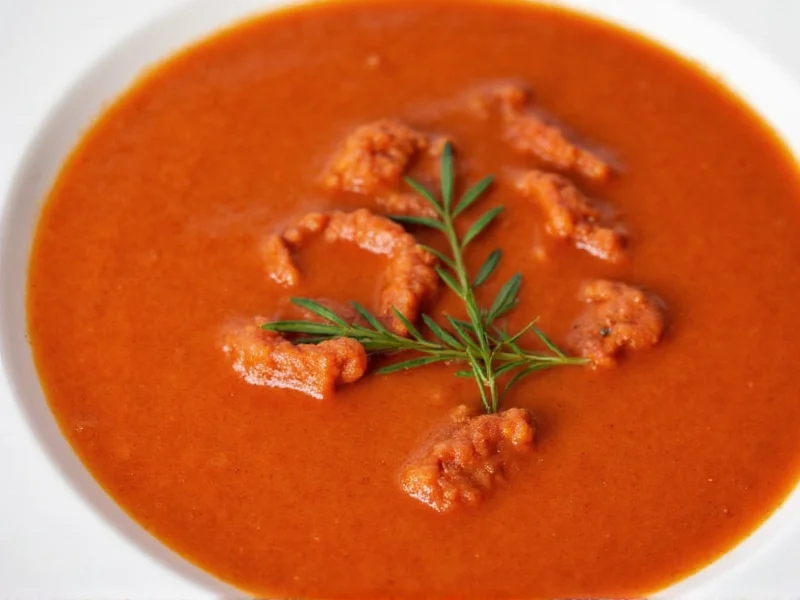Vodka sauce, a beloved component of Italian-American cuisine, often sparks curiosity about its namesake ingredient. Despite containing vodka, the final product doesn't deliver the sharp alcoholic punch you might expect. The cooking process transforms the vodka's role from a dominant flavor to a subtle enhancer that helps marry the sauce's components.
The Science Behind Vodka in Sauce
When vodka is added to tomato cream sauce, several chemical processes occur. Alcohol acts as a solvent, helping to extract flavor compounds from tomatoes that aren't water-soluble. As the sauce simmers, the alcohol content (which boils at 173°F/78°C) evaporates well before the sauce reaches its serving temperature. What remains are the subtle flavor compounds that vodka helped release from the tomatoes, creating a more complex flavor profile without the characteristic burn of alcohol.
Food scientists confirm that after proper cooking, vodka sauce contains minimal alcohol content—typically less than 5% of the original amount added. This explains why does penne alla vodka taste like alcohol is such a common misconception among first-time tasters.
Historical Context of Vodka Sauce
Vodka sauce emerged in 1970s Italy as a creative response to American demand for new pasta experiences. Italian chefs initially developed it as a novelty, but it quickly gained popularity in the United States. The sauce's creation wasn't about delivering vodka flavor but rather using vodka's unique properties to enhance traditional tomato-cream sauces.
Understanding why use vodka in tomato sauce requires appreciating its culinary function. Vodka helps emulsify the sauce, preventing the cream from separating while allowing the fat-soluble flavor compounds in tomatoes to integrate more fully with the cream base.
What Vodka Sauce Actually Tastes Like
Properly prepared vodka sauce offers a smooth, slightly sweet tomato flavor with creamy richness. The vodka's contribution is subtle—it enhances the tomato's natural sweetness and helps balance the acidity without adding any noticeable alcoholic flavor. Many first-time tasters describe it as "a more rounded tomato flavor" rather than detecting any vodka taste.
| Component | Before Cooking | After Cooking |
|---|---|---|
| Alcohol Content | 40% (in vodka) | Less than 5% of original |
| Flavor Profile | Sharp, alcoholic | Subtle, integrated with tomatoes |
| Texture | Liquid addition | Emulsified, creamy consistency |
Alcohol Content After Cooking: The Facts
Research from the USDA shows that simmering alcoholic ingredients for 15 minutes removes approximately 40% of the alcohol, while 30 minutes of cooking eliminates about 65%. Most vodka sauce recipes call for simmering for at least 20-30 minutes, reducing the alcohol content significantly.
This explains why vodka sauce for kids is generally considered acceptable in most households—the residual alcohol content becomes negligible. However, those with strict alcohol avoidance requirements should note that trace amounts may remain.
Common Misconceptions About Vodka Sauce
Several myths persist about vodka sauce that deserve clarification:
- Myth: Vodka is added for its flavor
Reality: It's primarily for its chemical properties in emulsification and flavor extraction - Myth: You can substitute any alcohol
Reality: Vodka's neutral flavor works best; other alcohols would impart their own distinct tastes - Myth: More vodka means better sauce
Reality: Typically only 1-2 tablespoons per jar of sauce is needed
Understanding what does vodka do in vodka sauce helps home cooks appreciate its precise role in creating that distinctive flavor profile without overwhelming the dish with alcohol taste.
Culinary Tips for Perfect Vodka Sauce
For those making vodka sauce at home, consider these professional tips:
- Add vodka to a hot pan before adding cream to allow proper evaporation
- Use only 1-2 tablespoons per standard jar of tomato sauce
- Simmer for at least 20 minutes after adding vodka
- Use high-quality vodka—impurities in cheap vodka can affect flavor
- Never add vodka at the end of cooking
These techniques ensure that vodka sauce alcohol content after cooking remains minimal while maximizing the flavor benefits.
Conclusion
Vodka sauce represents a clever culinary application of chemistry rather than a vehicle for alcohol flavor. The vodka's role is functional—enhancing flavor integration and texture—without leaving a noticeable alcoholic taste in the finished dish. This understanding helps explain why does vodka sauce taste like vodka is such a persistent question among curious food lovers.
Does vodka sauce contain alcohol after cooking?
Yes, but in minimal amounts. Proper cooking reduces the alcohol content significantly—typically to less than 5% of the original amount added. Most recipes call for simmering long enough that the residual alcohol becomes negligible, though trace amounts may remain.
Can children eat vodka sauce?
Yes, most culinary experts consider properly prepared vodka sauce safe for children. The cooking process significantly reduces alcohol content, leaving only trace amounts. Many restaurants serve vodka sauce dishes to children, and it's commonly used in family cooking.
What can I use instead of vodka in vodka sauce?
While substitutes aren't ideal, you can use water with a squeeze of lemon juice to help emulsify the sauce. Some chefs recommend a small amount of white wine vinegar diluted with water. However, these alternatives won't provide the same flavor integration as vodka, as they lack its unique solvent properties for fat-soluble tomato compounds.
Why does vodka help tomato sauce?
Vodka acts as an emulsifier, helping the cream and tomato components blend smoothly without separating. More importantly, alcohol is an excellent solvent for fat-soluble flavor compounds in tomatoes that water can't extract, creating a more complex and rounded flavor profile in the finished sauce.
How much vodka should go in vodka sauce?
Most authentic recipes call for just 1-2 tablespoons of vodka per standard jar (24 oz) of tomato sauce. Adding more won't improve the flavor and may leave noticeable alcohol taste if not cooked sufficiently. The vodka's role is functional rather than flavor-forward, so less is more in this application.











 浙公网安备
33010002000092号
浙公网安备
33010002000092号 浙B2-20120091-4
浙B2-20120091-4